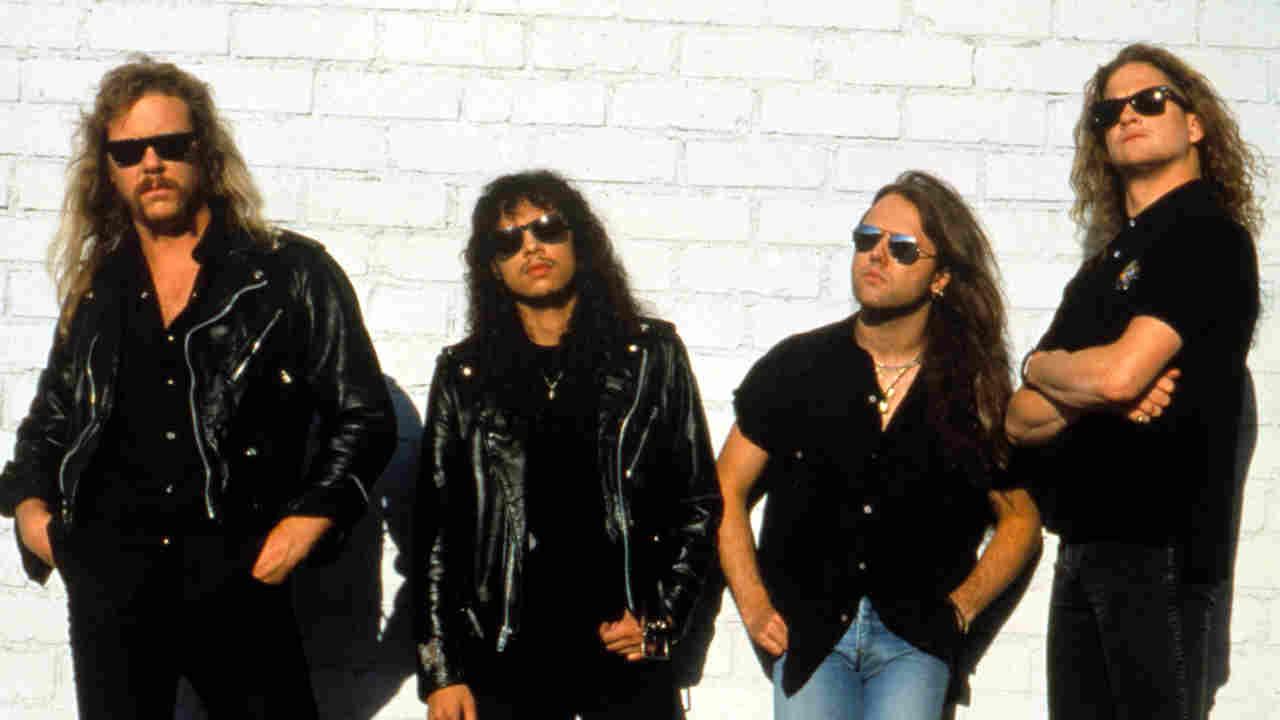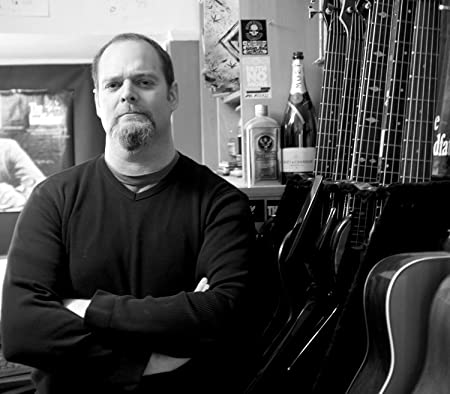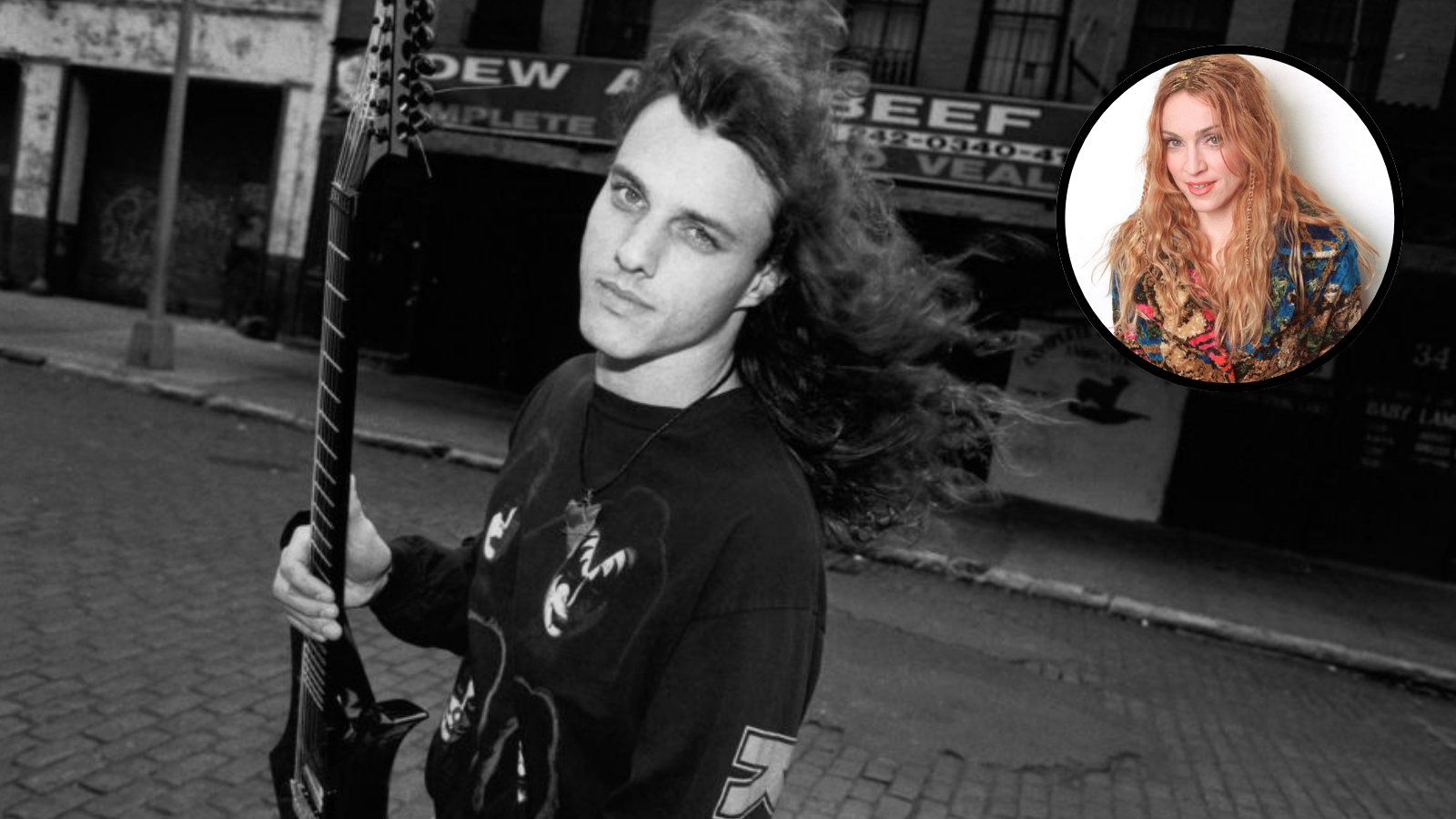“As great as it undoubtedly was, the bug-eyed insanity of thrash was nowhere to be heard in any of its songs”: How Metallica’s Black Album killed thrash metal
The band that helped create thrash pretty much killed it

“I’ve outgrown that fucking lullaby…”
Damn, that line was powerful, barked out by Metallica’s James Hetfield on Dyer’s Eve, the final song on his band’s 1988 album …And Justice For All. Signing off their amazing 1980s catalogue with this slab of warp-speed thrash metal, Metallica made it clear that when it came to musical aggression, few other bands could compete.
No wonder that come August 12, 1991, metalheads queued around the block at record stores in every city in the civilised world – and beyond – to snap up a copy of ‘Tallica’s fifth album, a self-titled behemoth with a none-more-black cover. This, we told ourselves, would be the ultimate thrash album, a record that would make Master Of Puppets sound tame. Grabbing an LP or cassette off the rack (or possibly a CD if we had the money), we ran home, slapped the thing on our dad’s Sanyo hi-fi and waited for it to begin, as eager as a kid on Christmas morning.
Enter Sandman started. Not bad. Mid-tempo.
Sad But True began. Very good, we concluded. Heavy. Still mid-tempo, though.
Holier Than Thou was next. Fine, we reckoned. Kind of… mid-tempo.
It was like waiting for the punchline to a disappointing joke. As great as the Black Album undoubtedly was, the speedy, bug-eyed insanity of thrash was nowhere to be heard in any of its songs. Not even in Through The Never, which started promisingly before going all, you guessed it, mid-tempo.
Sign up below to get the latest from Metal Hammer, plus exclusive special offers, direct to your inbox!
Clearly, Metallica had done some more “outgrowing” when it came to thrash metal.
In retrospect, when thrash went into hibernation, it wasn’t all Metallica’s fault. Change was already in the air in the early 1990s. For at least five years before the Black Album appeared, glam and thrash had divided the metal scene pretty much equally, in America anyway: you could be on one side or the other, but not both, and perhaps people were sick of this state of affairs. It was time for new sounds to enter, and these arrived more or less at the same time as the Black Album. Within six weeks, in fact.

September 24, 1991 is as good a date as any to nominate as history’s ‘International Bye-Bye To Thrash Metal Day’. On that date, Nirvana released their second album Nevermind and the Red Hot Chili Peppers issued their fifth, Blood Sugar Sex Magik. Heavy enough to appeal to headbangers, melodic enough to attract non-metal fans and catchy enough that the postman could whistle them on his way up your garden path, the songs on these two game-changing records completely redefined the shape of heavy music.

The Chilis’ clean-cut, funk-laden rock had been on its way for a while. In their early days, RHCP were a ferocious band, delivering amped-up, punk-influenced funk in LA clubs and crossing over to the metal scene with ease. Competitors with a similar sound, notably Faith No More but also lesser-knowns such as Living Colour, Infectious Grooves and 24-7 Spyz, had been assisting in the rise of funk-metal, but when the Chilis recruited über-producer Rick Rubin to tweak the faders on Blood Sugar Sex Magik, millions of new fans came their way faster than you could say, “Nice royalty cheques, Anthony”.
And why not? The songs were great. They just weren’t thrash.
Grunge, spearheaded by Nirvana but soon boosted by the arrival of Pearl Jam, Soundgarden, Alice In Chains and Stone Temple Pilots, was a different phenomenon entirely. You could forget the slap bass and day-glo socks of the funk-metal bands. With grunge, the focus was on introspection and emotional self-analysis, or “being a miserable bastard” as your big brother put it. The music was plenty heavy, mind, and any metalhead who has never moshed to the sound of Mudhoney, Tad, Hole or Melvins hasn’t really lived. For the three-year period between the release of Nevermind and Nirvana singer Kurt Cobain’s suicide in April 1994, grunge was all over MTV and the radio.
And why not? The songs were great too. They just weren’t thrash!
It was a dark time for the thrash alliance, all right, but there were a few signs of life. Like a will-o’-the-wisp shining feebly in the dark forest of alternative rock, a few songs cropped up here and there which showed allegiance to the thrash template of old.
Take Pantera, for example. Although groove was clearly in the hearts of the Texans, their early influences included Megadeth and Slayer, and you could hear this in the songs Rise and Fucking Hostile from Pantera’s classic 1992 album Vulgar Display Of Power.
A couple of years later, Machine Head emerged with Burn My Eyes, also a groove-metal album but one with the occasional fast beat – specifically in the pulverising Blood For Blood – to quicken thrashers’ pulse rates. Both bands continued in this direction into the mid-90s, with Pantera delivering the amazing Strength Beyond Strength on 1994’s Far Beyond Driven and Machine Head thrashing it up on Struck A Nerve on The More Things Change… three years later.
Sadly, these songs were few and far between. The Black Album had been so huge that the songwriters in pretty much every other thrash metal band around decided to try and bite off a chunk of Metallica’s mainstream success for themselves. Megadeth, Testament and Anthrax all slowed their song tempos right down, leaving old-school fans feeling betrayed. The sole exception, certainly among bands operating at any significant commercial level, was Slayer, who deserve enormous recognition for one simple thing: they didn’t slow their songs down. Their 1994 album Divine Intervention may have sounded a bit wonky thanks to the various producers who tinkered with it, but the songs were brutal, evil and above all fast.

The general tendency, though, was for the thrash metal bands of yore to attempt a radio-friendly direction or, failing that, to simply split up. Exodus, Forbidden, Vio-Lence, Flotsam And Jetsam, Sodom, Dark Angel, Destruction, Nuclear Assault, Onslaught, Death Angel and a bunch of other bands either vanished or were reduced to a shadow of their former selves. Kreator went goth. Sepultura went groove. Thrash metal was, to put it bluntly, yesterday’s news.
The bigger picture, now that we’re looking back at this era with the benefit of hindsight, is that heavy metal was simply repositioning itself. Traumatic as it felt, thrash metal was not going anywhere: it just downsized for a while, replaced by other forms of heavy music. By 1994, Korn had arrived with their downtuned groove sound. Chugging, solid riffs replaced fast crunchy ones and nu metal was born.
Korn went multi-platinum while thrash fans sulked. Coal Chamber followed. Deftones arrived. Limp Bizkit emerged. When Slipknot smashed their way into the charts in 1999, the war of nu metal versus thrash was so definitively decided in favour of the overalls and masks that the very word ‘thrash’ seemed laughably old-hat.
Deprived of their thrills, thrash fans voted with their feet and went elsewhere. If no one from a thrash metal band was going to give us the adrenaline rush we craved, and no nu metal band could supply, we ‘d look deeper…
Death metal had taken hold in the early 1990s while MTV’s attention was focused on Nirvana. Although the death metal scene had been bubbling under the surface since the late 80s, by 1992 new bands from Florida such as Obituary, Deicide and Morbid Angel were on the rise, while their New York State counterparts Cannibal Corpse, Immolation and Malevolent Creation were making an international mark. In the UK, Napalm Death and Carcass were developing a death metal and grindcore combination to cult acclaim; in Sweden, gritty, adrenalised death metal was emerging from Entombed, Grave, Carnage and Dismember. A melodic offshoot evolved in Gothenburg, featuring At The Gates, Dark Tranquility and other musically accomplished acts. Indebted to the thrash metal pioneers of the previous decade, these bands resolved to take the old style and make it heavier, faster and much more aggressive.
The same was true of black metal. Although Venom, Bathory, Mercyful Fate and Celtic Frost had made an impact in the mid-80s, their Satanic posturing was rendered obsolete almost overnight by a new wave of devilry which emerged from Norway and Sweden in the early 90s. You know the names: Mayhem, Immortal, Burzum, Darkthrone, Emperor, Satyricon, Dimmu Borgir. Helped along by a sequence of intra-scene murders and the media attention they received, the Norwegians spent the rest of the decade expanding into startling musical territory and reshaping everyone’s ideas of good old devil worship. We Brits helped out by adding Cradle Of Filth into the mix, too.
The new death and black metal bands made music that demanded your attention, and repaid you with the rush of excitement that the best old-school thrash metal bands had given you. This also applied to the Californian stoner rock and British doom metal scenes. Although Kyuss, Monster Magnet, Cathedral and Paradise Lost played slow, the heaviness of their songs couldn’t be denied, all of which meant that thrashers in search of thrills had plenty of options as the decade wore on.
Fortunately, times changed and a new thrash metal scene made its presence known by the end of the 90s. The Haunted, a Swedish act formed by members of At The Gates, were first up. In the States, Exodus and Testament returned to their old, tougher sound, as did Kreator and Sodom in Europe. Reformation fever gripped California’s Bay Area, with Forbidden and Death Angel back in business. Slayer had never gone away, although they had flirted with nu metal on 1998’s Diabolus In Musica, and by the new century even Megadeth and Anthrax had come back some of the way to the old, mosh-friendly style.
Finally, the rogues who caused all the trouble – Metallica – proved their allegiance to the original music with Death Magnetic in 2008. Sure, the album was no Ride The Lightning, but it was faster, more technical and more dynamic than the Black Album. And that, friends, represents progress.
Originally published in Metal Hammer Presents Metallica And The Story Of Thrash (February 2014)
Joel McIver is a British author. The best-known of his 25 books to date is the bestselling Justice For All: The Truth About Metallica, first published in 2004 and appearing in nine languages since then. McIver's other works include biographies of Black Sabbath, Slayer, Ice Cube and Queens Of The Stone Age. His writing also appears in newspapers and magazines such as The Guardian, Metal Hammer, Classic Rock and Rolling Stone, and he is a regular guest on music-related BBC and commercial radio.
You must confirm your public display name before commenting
Please logout and then login again, you will then be prompted to enter your display name.



